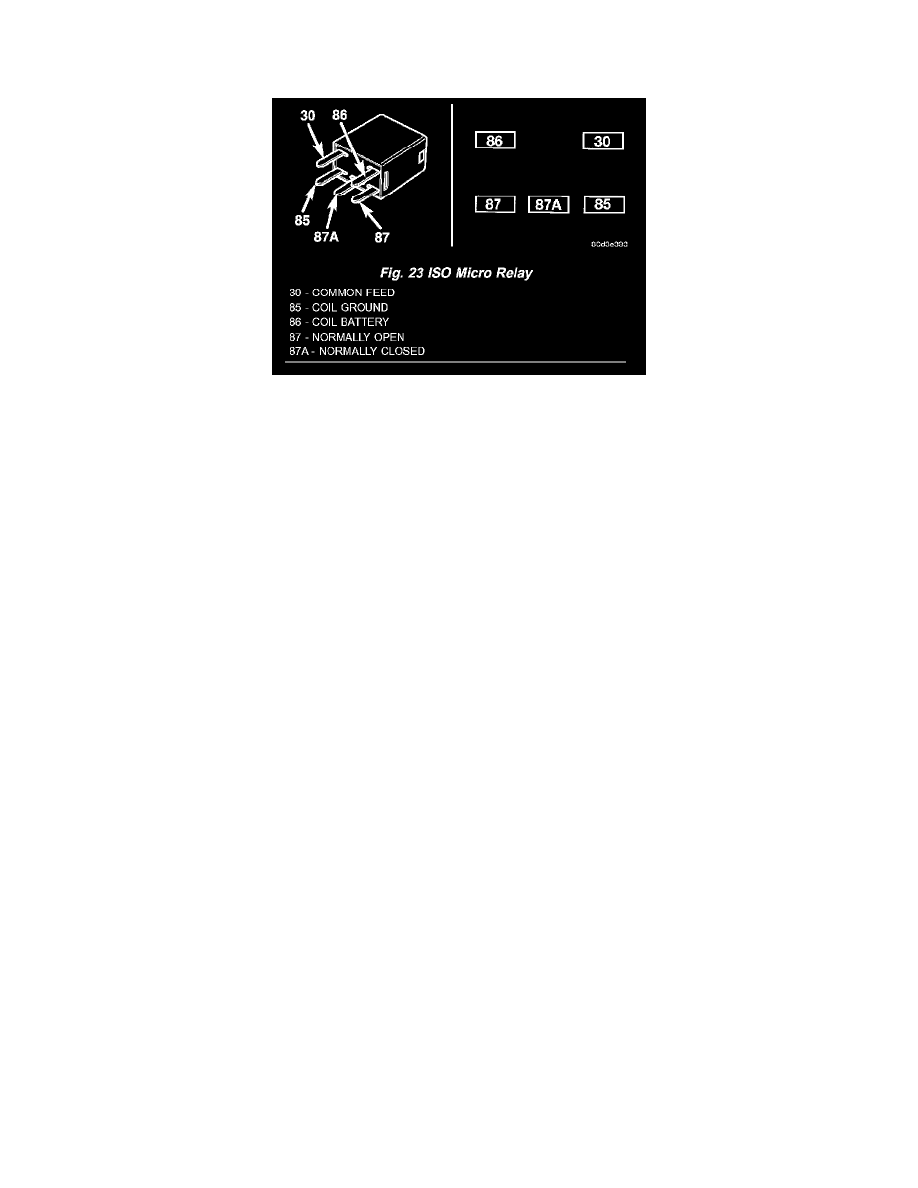RAM 1500 Truck 4WD V8-5.9L VIN Z (2002)

Wiper Relay: Description and Operation
Relay-Wiper On/Off
Fig. 23 ISO Micro Relay
WIPER ON/OFF RELAY
The wiper switch is a direct input to the instrument cluster. The instrument cluster sends a PCI bus request to the FCM to actuate the wiper
ON/OFF relay.
The wiper ON/OFF relay is then actuated through the low side control circuit. This relay switches power to the wiper high/low relay. This circuit is
electronically controlled and continuously monitored for malfunctions.
The wiper ON/OFF relay is located in the Integrated Power Module (IPM) in the engine compartment near the battery The wiper ON/OFF relay is
a conventional International Standards Organization (ISO) micro relay. Relays conforming to the ISO specifications have common physical
dimensions, current capacities, terminal patterns, and terminal functions. The relay is contained within a small, rectangular, molded plastic housing
and is connected to all of the required inputs and outputs by five integral male spade-type terminals that extend from the bottom of the relay base.
The wiper ON/OFF relay cannot be adjusted or repaired and, if faulty or damaged, the unit must be replaced.
The wiper ON/OFF relay is an electromechanical switch that uses a low current input from the Front Control Module (FCM) to control a high
current output to the wiper motor. The movable common feed contact point is held against the fixed normally closed contact point by spring
pressure. When the relay coil is energized, an electromagnetic field is produced by the coil windings. This electromagnetic field draws the
movable relay contact point away from the fixed normally closed contact point, and holds it against the fixed normally open contact point. When
the relay coil is de-energized, spring pressure returns the movable contact point back against the fixed normally closed contact point. A resistor is
connected in parallel with the relay coil in the relay, and helps to dissipate voltage spikes and electromagnetic interference that can be generated as
the electromagnetic field of the relay coil collapses.
The wiper ON/OFF relay terminals are connected to the vehicle electrical system through a connector receptacle in the Integrated Power Module
(IPM). The inputs and outputs of the wiper ON/OFF relay include:
-
Common Feed Terminal - The common feed terminal (30) is connected to the common feed terminal of the wiper high/low relay at all times
through the wiper ON/OFF relay output circuit.
-
Coil Ground Terminal - The coil ground terminal (85) is connected to a control output of the Front Control Module (FCM) through a wiper
ON/OFF relay control circuit. The FCM controls wiper motor operation by controlling a ground path through this circuit.
-
Coil Battery Terminal - The coil battery terminal (86) receives battery current at all times from a fuse in the IPM through a fused ignition
switch output (run-acc) circuit.
-
Normally Open Terminal - The normally open terminal (87) receives battery current at all times from a fuse in the IPM through a fused
ignition switch output (run-acc) circuit, and provides battery current to the wiper ON/OFF relay output circuit whenever the relay is energized.
-
Normally Closed Terminal - The normally closed terminal (87A) is connected to ground at all times through a take out of the left headlamp
and dash wire harness with an eyelet terminal connector that is secured by a screw to the front end sheet metal, and is connected to the wiper
ON/OFF relay out- put circuit whenever the relay is de-energized.
The wiper ON/OFF relay can be diagnosed using conventional diagnostic tools and methods. However, conventional diagnostic methods may not
prove conclusive in the diagnosis of the instrument cluster, the Front Control Module (FCM), or the electronic message inputs to or outputs from
